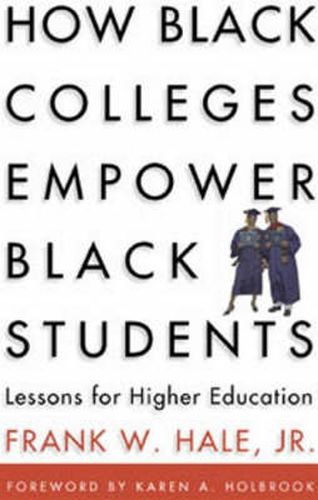Readings Newsletter
Become a Readings Member to make your shopping experience even easier.
Sign in or sign up for free!
You’re not far away from qualifying for FREE standard shipping within Australia
You’ve qualified for FREE standard shipping within Australia
The cart is loading…






To their disadvantage, few Americans - and few in higher education - know much about the successes of historically Black colleges and universities. How is it that historically Black colleges graduate so many low-income and academically poorly prepared students? How do they manage to do so well with students ‘as they are’, even when adopting open admissions policies? In this volume, contributors from a wide spectrum of Black colleges offer insights and examples of the policies and practice - such as retention strategies, co-curricular activities and approaches to mentoring - which underpin their disproportionate success with populations that too often fail in other institutions. This book also challenges the myth that these colleges are segregated institutions and that teachers of color are essential to minority student success. HBCUs employ large numbers of non-Black faculty who demonstrate the ability to facilitate the success of African American students. This book offers valuable lessons for faculty, faculty developers, student affairs personnel and administrators in the wider higher education community - lessons that are all the more urgent as they face a growing racially diverse student population. While, for HBCUs themselves, this book reaffirms the importance of their mission today, it also raises issues they must address to maintain the edge they have achieved.
$9.00 standard shipping within Australia
FREE standard shipping within Australia for orders over $100.00
Express & International shipping calculated at checkout
To their disadvantage, few Americans - and few in higher education - know much about the successes of historically Black colleges and universities. How is it that historically Black colleges graduate so many low-income and academically poorly prepared students? How do they manage to do so well with students ‘as they are’, even when adopting open admissions policies? In this volume, contributors from a wide spectrum of Black colleges offer insights and examples of the policies and practice - such as retention strategies, co-curricular activities and approaches to mentoring - which underpin their disproportionate success with populations that too often fail in other institutions. This book also challenges the myth that these colleges are segregated institutions and that teachers of color are essential to minority student success. HBCUs employ large numbers of non-Black faculty who demonstrate the ability to facilitate the success of African American students. This book offers valuable lessons for faculty, faculty developers, student affairs personnel and administrators in the wider higher education community - lessons that are all the more urgent as they face a growing racially diverse student population. While, for HBCUs themselves, this book reaffirms the importance of their mission today, it also raises issues they must address to maintain the edge they have achieved.